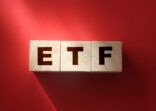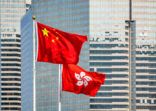David Quah, Value Partners
More than half of 100 professional investors in Greater China surveyed by Brown Brothers Harriman indicated that they will increase ETF investments within the next 12 months.
Quah believes that some private banks may have followed suit, but to a lesser extent, especially when it comes to ETFs domiciled in Hong Kong.
“For most of the Hong Kong-listed or even Asian-listed ETFs, they have not reached a critical size where private banks can put them on their shelves,” Quah told FSA.
Most private banks in Hong Kong, which are usually regional or international banks, follow a standard when it comes to putting funds on their shelves, Quah explained.
“They don’t mind smaller ETFs, but small to them means an AUM of $100m. For the bigger private banks, they want $500m.
“It doesn’t mean that high net worth clients don’t want to use ETFs, it is just because they are not on their shelves,” he added.
Quah believes that when private banks include ETFs on their shelves, the products are usually domiciled in the US and in Europe because of the longer track records and larger AUM.
There are 111 ETFs, excluding leveraged and inverse products, listed on the Hong Kong bourse. However, only 26 have assets of at least $100m, according to data from the Hong Kong Exchange. The market is also concentrated, with the 26 products accounting for 96% of Hong Kong’s $41bn ETF market.
Value Partners in total has six ETFs, including five smart-beta single-country ETFs and one gold ETF. Only the gold ETF has assets of at least $100m, HKEX data shows.

Source: HKEX
Lack of diversity
One recurring argument about why most ETFs in Hong Kong haven’t reached critical mass is lack of diversified products.
Out of the 111 ETFs, 41% of them invest in Hong Kong companies, Hong Kong-listed Chinese companies and Chinese-listed Chinese companies, according to HKEX data.
The remaining ETFs are focused on other markets outside Greater China, which include regional and single-country ETFs that focus in Asia-Pacific, European and US markets.
But Hong Kong- and China-focused ETFs account for 75% of the market:

Source: HKEX
Quah believes that Hong Kong investors have a home-market bias.
“They just want Hong Kong and China. If they go further, they may go for developed markets, such as the US, especially if they believe that the US is doing well.”
The home-market bias could also result from lack of knowledge about other markets. For example, Quah said that for a time, Japan became popular among Hong Kong investors during the height of prime minister Shinzo Abe’s economic growth initiative, Abenomics.
When Abenomics became popular, Hong Kong investors wanted exposure to Japan, he said.
“But now, it’s more difficult to understand whether Japan will outperform or not.
“A lot of Hong Kong people visit Japan or Taiwan or Korea, but I don’t think most of them have a very strong view of their financial markets,” he added.
Cutting costs
The firm does not have plans to launch more ETFs, but last year it established the quantitative investment solutions team, which is a group that includes investment and sales staff dedicated to the firm’s ETF and smart beta business.
The main mission is finding ways to make its ETFs more attractive to investors, such as cutting down costs.
For example, in 2018 the firm waived redemption and creation fees for all of its six ETFs “until further notice”, Quah said.
Last year, it reduced the management fees for its Value Gold, China and China A to 10bps from around 75bps.
















